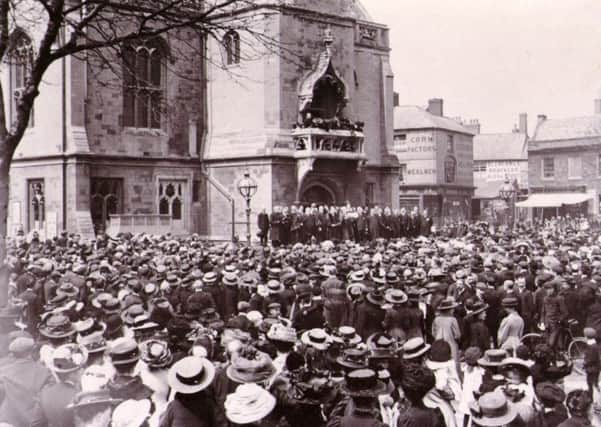Look Back with Little: When Betjeman wrote in support of Town Hall


The edition of March 14 was illuminated by his observations on the architectural merit of the Town Hall. Preface comments above his column explain why Betjeman was invited to cast an experienced eye over the Victorian building.
The editor made it known that there was an expectation that the Town Hall would be pulled down if plans for a new redevelopment scheme for the town centre went ahead. Such action was to be seen as the culmination of discussions and planning about the creation of a new civic area at North Bar.
Advertisement
Hide AdAdvertisement
Hide AdBetjeman began with the frank admission that he was familiar with the exterior of the building but not the interior. In this respect it would seem he was not alone. Many before him had puzzled over its function. However Betjeman was not in their ranks.
He maintained that the building ‘proclaimed its purpose’ and had an added advantage of being built in the regional marlstone. These merits offset the disadvantage of a site which was ‘an awkwardly placed corner’.
Despite this he felt that Edward Bruton’s building was in scale with the town and in particular Bridge Street. It also fitted into the historic town context by reason of the perpendicular style and inclusion of a high covered ledge that could be used for loyal proclamations and the marking of election results. Overall the building was of a time which favoured Victorian Gothic.
In the 1850s this was not an especially important style but time was expected to make it more fashionable.
Advertisement
Hide AdAdvertisement
Hide AdAn important sense in which he felt the building was quite successful was that many Banbury people had a sense of ownership. In any case there were always going to be other uses such as a library in the event that the property was ever thought to be too small for civic purposes.
Overall Betjeman came to the opinion that for aesthetic reasons it would be a pity to demolish it. I suspect this prompted the editor’s caption ‘this building could never be replaced’. Significantly the guest columnist had added the observation that the 1854 Town Hall compared favourably with ‘the ill-shaped buttonhook of a concrete lamp standard pressed out in a remote factory and which stands in front of it’.
Whereas Betjeman was in a reflective mood when he accepted the invitation to evaluate Banbury’s third Town Hall, other writers have highlighted different characteristics. Amongst the most interesting are comments contained in WP Johnson’s Strangers Guide to Banbury (published in 1861) and Banbury Through 100 Years by William Potts.
In the first, Johnson concludes that the building offers ‘no great pretensions to architectural beauty’. This remark seems to be based on his reaction to the ‘dumpy little tower’, a shape that made him wonder if the function was that of a dissenting chapel or grammar school. Johnson then goes on to talk about ‘the large room upstairs’ which suffered from poor sound reproduction and so was best for election dinners, tea parties, concerts and dances’.
Advertisement
Hide AdAdvertisement
Hide AdIn noting the room doubled as a place for magistrates’ gatherings, Johnson wondered why there had been so few cases. A museum also caught his attention as it seemed to be dominated by two battered breastplates which might have been used by no less than Prince Rupert and Cromwell.
Potts is another source of contrasting comment. Whereas Betjeman refers to the awkward shape of the site, Potts reminds his readers of a previous use for the land. This was as a public ash-pit, which he stressed was a public nuisance. People deposited ashes and garbage and the pile was always overflowing.
> I am grateful to Anne Hayward for sending the copy of the Banbury Guardian for March 14, 1963